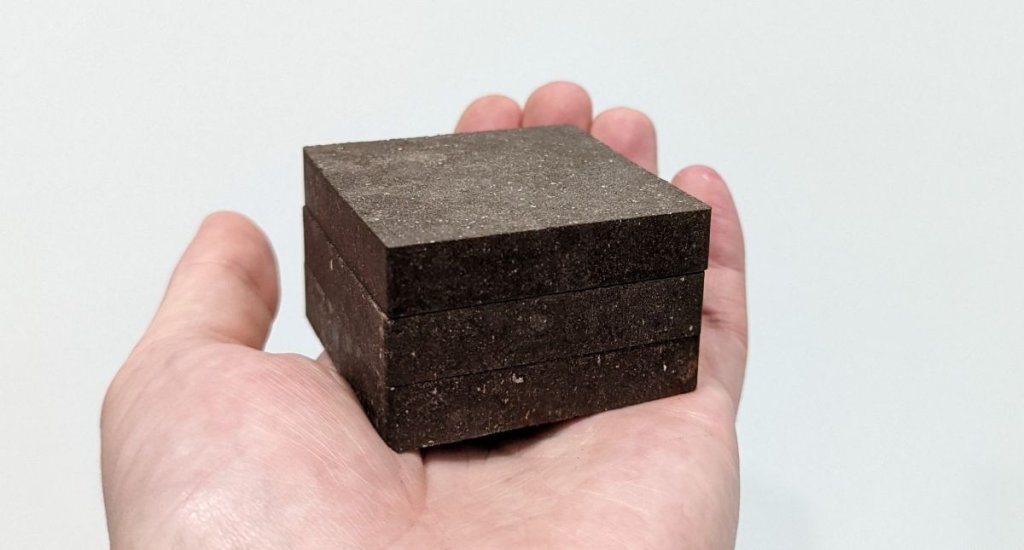
Potatoes are better than human blood for making space concrete bricks, scientists say (Image Credit: Space.com)
Engineers have created an intriguing concrete alternative using simulated Martian or lunar soil, potato starch and salt.
The “space concrete” is twice as strong as conventional concrete, the researchers say. They hope the new material will eventually facilitate construction efforts on the moon and Mars.
In a new study published in the journal Open Engineering (opens in new tab), two researchers from the University of Manchester in England demonstrate the effectiveness of potato starch as a binder to create the novel “StarCrete.”
Related: How living on Mars could challenge colonists (infographic)

In their study, concrete mixtures using simulated Martian and lunar soils featured strengths more than double that of ordinary concrete, which has a comprehensive strength measuring around 32 Megapascals (MPa). The StarCrete mixed with faux-Martian soil clocked in at 72 MPa, while the mixture using simulated lunar regolith came in even stronger, at 91 MPa.
Stronger concretes typically last longer, but that isn’t StarCrete’s major advantage as a potential building material on the moon or Mars. The scientists estimate that just 55 pounds (25 kilograms) of dehydrated potatoes could be used to produce nearly half a ton of StarCrete, which is enough to sculpt over 200 bricks. For context, you need about 7,500 bricks to construct a three-bedroom house here on Earth.
Typical materials needed to mix concrete come with considerable weight. For future lunar and Martian constructions, as with any space mission, weight reduction is a big priority. Whether it be a satellite, cargo to the International Space Station or materials to build a house on the moon, the heavier a payload, the more cost-prohibitive it is to launch into space. So, the less weight, the better.
Capitalizing on the resources available at an astronaut’s destination to supplement supplies that are difficult or expensive to send from Earth, known as in-situ resource utilization (ISRU), has long been the strategy when researching how humans might create sustainable outposts on other planetary bodies. So, the strength and durability made possible by a lightweight potato starch-based concrete mix holds high potential over conventional materials when it comes to otherworldly construction, the study team says.
Potato starch wasn’t the first medium that University of Manchester scientists tested in their search for ISRU building supplies. In a previous study, the same team explored the possibility of using human blood and urine as binding agents for their extraterrestrial concrete. The blood and urine of astronauts, after all, are renewable resources, and they’re available wherever an astronaut’s mission might take them.
Concrete from the researchers’ trials using blood and urine also produced strengths above traditional mixtures, measuring around 40 MPa. These bricks’ construction, however, would require that astronauts repeatedly drain their own bodily fluids, which was viewed as a drawback.
Aled Roberts, the lead researcher for the StarCrete project and research fellow for the Future Biomanufacturing Research Hub at the University of Manchester, concedes that using potato flakes is preferable to blood and pee.
“Astronauts probably don’t want to be living in houses made from scabs and urine,” he said in a statement (opens in new tab).
If that disappoints any current or future space travelers, fret not. The opportunity to contribute literal parts of yourself into the construction of your Martian home isn’t completely lost. The specific salt compound used in the potato-based StarCrete mixture is magnesium chloride, which can be abstracted from Martian soils, or, luckily for you, human tears.
Follow us @Spacedotcom (opens in new tab) or on Facebook (opens in new tab) and Instagram (opens in new tab).





